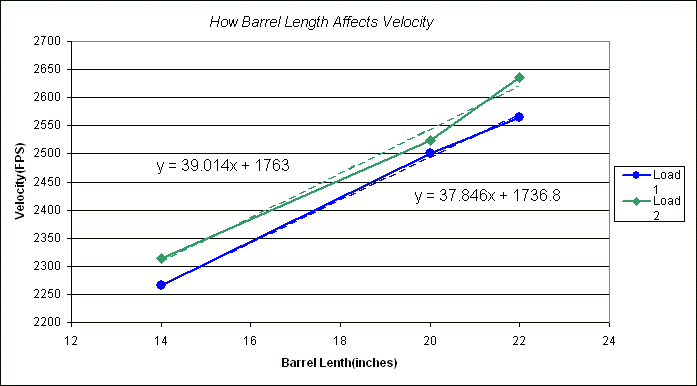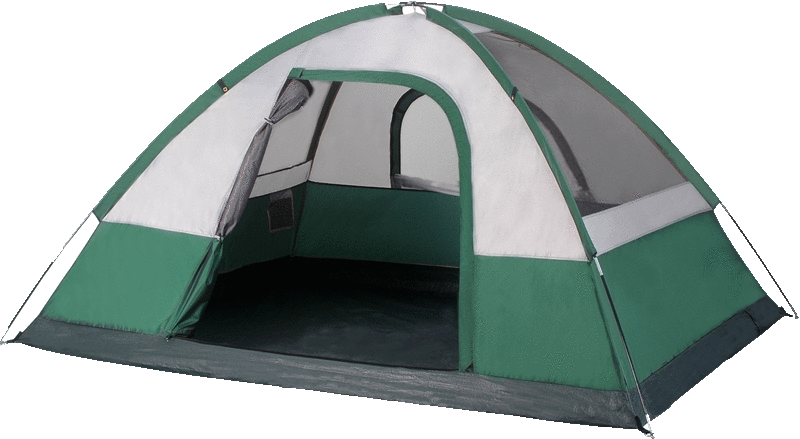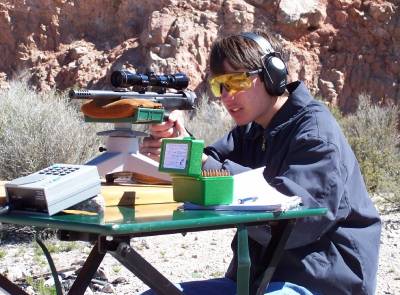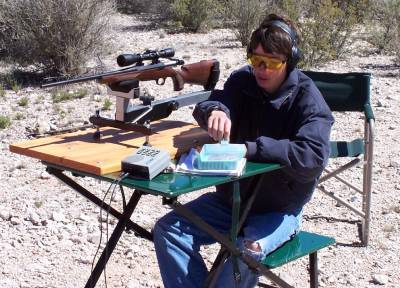My school was having a science fair and as a requirement for my Science grade,
I had to do a project. I now wanted to do something a little more unusual so
my project would stick out in everyone’s memories. I wasn’t quite sure what
I was going to do it on. There seemed to be limitless choices, and there were
few restrictions. So with that in mind, I decided I could probably do a
project on ballistics, it was related to the physics and energy category after
all. I knew there must be someway to incorporate ballistics into my assignment,
but I was having difficulties either thinking up one I could do, or getting the
resources to do a project (some required multiple firearms). But then my
father pointed out that we have three different .260’s of different barrel
lengths and we could chronograph them.
I started by creating a question and hypothesis. My question would be “How
does barrel length affect velocity?” I then hypothesized that a longer barrel
would have a slightly higher velocity. Then I would need some sort of way to
present my data, like with a chart or graph, and to finally come up with a
conclusion. I was then ready to test my hypothesis.
A few weeks later an opportunity came when we were going for a visit to my
grandparent’s house in Chino Valley. So when we went up there we would be
able to find a remote location to conduct the experiment. We packed up the
rifles and chronograph and were ready to begin testing. We had a general
idea of where to go, but not quite. The area was mostly flat, with little
or no backstop.
After much searching my father and I found a small abandoned rock quarry in
which to set up in. There we began our testing. It took a while, but I
had fun shooting.
In the experiment I followed some procedures I set up. For the experiment I
was using 3 different .260’s each with a different barrel length. The .260’s
I used were a 14 inch single shot Lone Eagle handgun, a 20 inch bolt-action
Browning Micro Hunter rifle, and a 22 inch bolt-action Browning Stainless
Stalker.
| Average Velocities |
| Barrel Length |
Load 1 |
Load 2 |
| 14 |
2265 |
2314 |
| 20 |
2500 |
2523 |
| 22 |
2565 |
2636 |
We would only be testing two different loads in the three guns. For
Load 1 I used a Sierra 85 grain hollow point with 27.0
grains of XMP 5744 powder and an overall length of 2.664 inches. For
Load 2 I used a Hornady 100 grain soft point with 35.0
grains of IMR 4064 powder and an overall length of 2.780 inches.
I would fire 10 rounds of each load in each of the .260’s. Then I would
record the velocity of each round fired and find the average. I also
recorded standard deviation, minimum and maximum velocities, and extreme
spread, which I ended up not using though.
It just took a while to fire each shot and record every single velocity. I
even forgot to record one of the velocities, but was able to figure it out
with the average (which the chronograph gives you automatically).
Well I did get uniform results from my experiment, and basically it all
matched up to my hypothesis, which was “The longer the barrel, the higher
the velocity”.
The longest .260 had the highest velocity with both loads. This is probably
because the powder can burn longer in the barrel and push the bullet farther
while still in the barrel, of course to a certain extent, where the powder is
all burnt up.

I also calculated the averages, then graphed them on an Excel chart. Excel
can then use the data to estimate a trend line from which a formula could be
drawn (see chart on next page). Using the formulas it is then reasonable to
say that there is about a 40 foot per second increase for each increase of one
inch of barrel length within the range of about 12-24 inches.
Velocity is important for two main reasons: to have a straighter projectile
path and to better penetrate game. Velocity affects straightness; because
the faster the object is shot the straighter it goes. This is good to remember
because when you sight in your rifle you would want to keep in mind how far
the bullet drops at various distances. When shooting game you also want to
make sure the bullet has enough energy to penetrate it. You can use the formula
k=1/2mv² to calculate kinetic energy (energy of a moving object), which is one
measure of how hard the bullet will hit the animal. Velocity is one of the
variables (the one being squared) so the higher the velocity, the higher the
kinetic energy.
Now I had my data and was ready to present it. The procedures were pretty
simple. To display it I had a green presentation board on which I glued
everything. I had to include a question, a hypothesis, procedures, a list of
my materials, data, a conclusion, and some visual aids such as pictures. I
also had included some miscellaneous info, like info on a chronograph, which
most people at my school probably never heard of, along with more minor
information.
I was running a little behind on the morning the projects were due, so I
skipped my morning class to make sure I was able to finish putting my pictures
on the presentation. I just needed to see what the school thought about it.
During science class I was able to help set up the projects. Then while I was
walking back to pick up some more projects, the principal came up to me. She
said that I’m not in trouble but she needed to talk to me anyways. It turned
out that my pictures were “inappropriate” for the younger children. I shouldn’t
have put pictures of guns on my presentation. Well, I had to take them down
after all the trouble I went through to put them up. At least I get to show
some of them in this article.
When I got my project back, I still got full points though. My teacher graded
it before the pictures were removed so everything ended up well.

![]()





